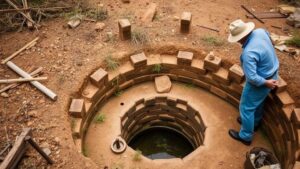Unearthing Shell Ornaments in River Estuaries Used by Coastal Tribes
Unearthing Shell Ornaments in River Estuaries Used by Coastal Tribes
The study of shell ornaments in river estuaries reveals significant insights into the cultural practices and environmental interactions of indigenous coastal tribes. These artifacts, often found in archaeological contexts, serve as crucial indicators of trade, social status, and the ecological knowledge of the communities that crafted them. This article explores the historical significance, manufacturing techniques, and ecological implications of shell ornaments used by coastal tribes, with a focus on river estuaries as a rich site for archaeological exploration.
The Historical Significance of Shell Ornaments
Shell ornaments have played a vital role in the cultural heritage of coastal tribes across various regions, particularly in North America. For example, the adornments, such as those found in the Pacific Northwest, were not merely decorative; they symbolized identity and status within tribal societies. Among the Coast Salish tribes, for example, items crafted from clamshells and other marine materials indicated a persons rank and lineage.
Research has shown that these ornaments were not only functional but also held spiritual significance. Many coastal tribes imbued their ornaments with meanings related to their connection to the sea and the life it sustained. use of specific shells, like the abalone or the mother-of-pearl, often had specific cultural associations tied to the tribes cosmology and beliefs.
Manufacturing Techniques of Shell Ornaments
The creation of shell ornaments involved a variety of techniques that showcased the ingenuity of coastal tribes. The primary methods include:
- Polishing and Engraving: Craftspeople utilized tools made from harder materials to engrave designs into the shells.
- Inlay Work: Different types of shell fragments were often inlaid into ornaments to enhance their visual appeal.
- Drilling: Tiny holes were carefully drilled for stringing shells into necklaces or for attachment to garments.
One notable example is the elaborate shell jewelry created by the Chumash people of California, which involved intricate inlay and geometric designs, showcasing both aesthetic beauty and skillful craftsmanship. The importance of these techniques extends beyond artistry; they embody traditional ecological knowledge, reflecting sustainable practices regarding shell collection and food resources.
Ecological Insights from Shell Ornament Discovery
Unearthing shell ornaments in river estuaries not only provides insights into human culture but also serves as a record of environmental conditions. types and quantities of shell materials available reflect shifts in marine ecosystems, influenced by climate change and human activity. For example, a decline in certain shell species in archaeological layers can indicate overharvesting, pollution, or habitat destruction.
In southern Florida, the analysis of shell middens–discarded shells from food preparation–has revealed changes in local ecosystems over thousands of years. By studying the composition of these middens, researchers can draw connections between human behavior and environmental changes, offering lessons for contemporary coastal management.
Case Studies of Shell Ornament Recovery
Various archaeological excavations have highlighted the significance of shell ornaments across coastal tribes. One prominent case is the excavation of the King Site in North Carolina, where a vast array of shell artifacts, including ornaments and tools, were uncovered. This site illustrated the complex trade networks that existed among coastal tribes, underscoring how these ornaments were not only local treasures but also items of commerce.
Another significant study involved the shell beads recovered from the Santa Barbara Channel in California, which provided evidence of extensive trade routes along the coast. The production of these beads demonstrated not only artistic craftsmanship but also a robust economic system that thrived on the natural resources available in estuarine environments.
Conclusion: The Importance of Preservation and Study
The study of shell ornaments found in river estuaries provides invaluable insights into the lives and cultures of coastal tribes. Archaeologists and cultural historians emphasize the need for continued exploration and preservation of these artifacts to ensure that the cultural narratives they represent are not lost. Moving forward, interdisciplinary approaches combining archaeology, anthropology, and environmental science will enrich our understanding of these essential aspects of human history.
Incorporating modern conservation methodologies and engaging indigenous communities in the study of their cultural artifacts can ensure that the significance of shell ornaments is honored and preserved for future generations. Proper stewardship of both archaeological sites and the stories they tell will benefit not only academics but also the heritage and identity of coastal tribes worldwide.



